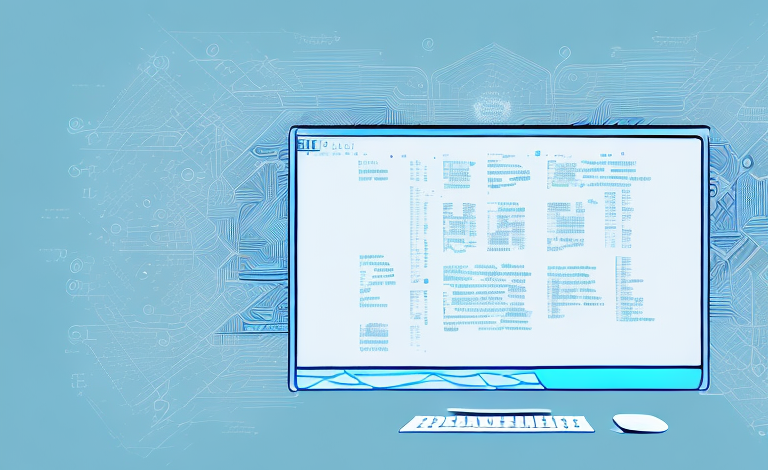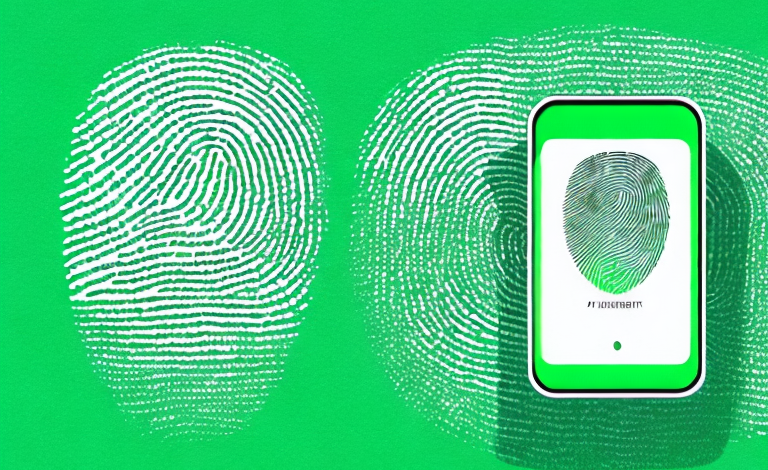When it comes to security measures, there are two common ways to authenticate oneself – using a personal identification number (PIN) or using biometric data such as fingerprints. While both options seem secure, there has been an ongoing debate about the effectiveness of each method. In this article, we will explore the basics of PIN and fingerprint security, their advantages and limitations, and the potential risks associated with both options to determine which is more secure: a fingerprint or a PIN.
Understanding the basics: PIN and fingerprint security
Personal identification numbers (PINs) are a common method of authentication, particularly in the case of financial transactions. A PIN is a sequence of numbers that is specific to each individual user and needs to be entered on a keypad for the user to gain access.
On the other hand, biometric security uses physiological or behavioral characteristics unique to an individual, such as fingerprints, retinal scans, voice recognition, or facial recognition, to verify identity. In this article, we will focus specifically on the use of fingerprints for authentication purposes.
One of the advantages of using fingerprints for authentication is that they are unique to each individual and cannot be easily replicated or stolen. Additionally, fingerprints are always with the user and do not require any additional equipment or devices to be carried around. However, there are also some limitations to using fingerprints for security purposes. For example, if a person’s fingerprints are damaged or altered due to injury or illness, they may not be able to use fingerprint authentication. Additionally, there are concerns about the privacy and security of storing biometric data, such as fingerprints, and the potential for this information to be hacked or misused.
Advantages and limitations of using a PIN for security purposes
One of the most significant benefits of using a PIN for authentication is that it is known only to the user. It is a secret piece of information that can be changed by the user, thereby increasing the level of security. Additionally, it is a widespread and easily accessible form of authentication, making it a widely accepted method.
However, there are limitations to using PINs for security purposes. One of the most significant is the risk of theft. In the case of a PIN, once it is known to an unauthorized individual, it can be easily used to gain access to the user’s information, and it cannot be changed without the user’s involvement.
Another limitation of using a PIN for security purposes is that it is vulnerable to brute force attacks. Since a PIN is typically a four-digit number, it can be easily guessed by an attacker who uses automated software to try all possible combinations. This makes it essential for users to choose a strong and complex PIN that is not easily guessable.
Despite its limitations, a PIN is still a popular and effective method of authentication. It is widely used in various industries, including banking, healthcare, and government, to secure sensitive information and transactions. However, it is important to use additional security measures, such as two-factor authentication, to enhance the level of security and protect against potential threats.
Advantages and limitations of using fingerprint recognition for security purposes
Biometric security, such as fingerprint recognition, has become increasingly popular for authentication purposes. The primary advantage of using fingerprints for authentication is that they are unique to each individual and cannot be easily replicated. Therefore, it is much harder for unauthorized individuals to gain access to secure areas or systems.
However, the success of using fingerprints for authentication is dependent on a variety of factors, including the quality of the scanned image, environmental factors, and physical changes in the user, such as aging or injury. Additionally, the security of the biometric data itself is also an issue, as it is possible for hackers to gain access to and steal this information.
Another limitation of using fingerprint recognition for security purposes is that it may not be suitable for certain individuals, such as those with certain medical conditions or disabilities that affect their fingerprints. In such cases, alternative methods of authentication may need to be used. Furthermore, fingerprint recognition technology can be expensive to implement and maintain, which may not be feasible for smaller organizations or individuals.
How fingerprint recognition technology works
The process of fingerprint recognition involves scanning an individual’s fingerprint to determine if it matches a stored fingerprint on a database, allowing access to a system or device. This is accomplished through a combination of hardware and software; the hardware captures the image of the fingerprint, and the software processes it to create a unique digital representation of the fingerprint.
There are two primary methods used for fingerprint recognition: optical and capacitive. Optical scanners use light to capture the pattern on the fingerprint and create a digital image of it. Capacitive scanners, on the other hand, work by measuring the electrical current that passes through the ridges and valleys of the fingerprint.
One of the advantages of using fingerprint recognition technology is its high level of accuracy. The unique patterns and ridges on each person’s fingerprint make it highly unlikely for two individuals to have the same fingerprint. This makes it a reliable method for identifying individuals and granting access to secure systems or devices. Additionally, fingerprint recognition technology is becoming more widely used in various industries, including law enforcement, healthcare, and finance, as a means of enhancing security and streamlining processes.
How PIN technology works
PIN technology is much simpler than fingerprint recognition. It relies on a user entering a specific sequence of numbers, which are verified against a database to provide access. This process usually involves a user entering a four-digit code into a keypad or interface.
One of the advantages of PIN technology is that it is easy to use and does not require any special equipment. It is also relatively inexpensive to implement, making it a popular choice for many organizations. However, one of the main drawbacks of PIN technology is that it can be vulnerable to hacking or guessing, especially if the user chooses a weak or easily guessable code.
To address this issue, many organizations have implemented additional security measures, such as limiting the number of attempts a user has to enter the correct code, or requiring the use of a secondary authentication method, such as a fingerprint or facial recognition scan. These measures help to increase the security of PIN technology and make it a more reliable option for access control.
Comparing the accuracy of fingerprint recognition to PIN
In terms of accuracy, fingerprint recognition is generally considered to be more reliable than PINs. PINs can be easily forgotten, stolen or guessed through brute-force methods. Fingerprint recognition, on the other hand, is considered to be much more secure because fingerprints are unique and cannot be replicated or easily stolen.
However, there are some limitations to fingerprint recognition technology. For example, if a person has a cut or injury on their finger, the fingerprint may not be recognized. Additionally, some people may have difficulty using fingerprint recognition due to skin conditions or disabilities.
Another factor to consider is the cost of implementing fingerprint recognition technology. It can be more expensive to install and maintain fingerprint scanners compared to traditional PIN systems. This cost may be prohibitive for some organizations, especially smaller businesses or non-profits.
The potential risks of PIN theft and how it can be prevented
PIN theft is a common occurrence, particularly in cases where thieves can observe or record an individual entering their PIN. To prevent this type of theft, it is recommended that individuals use complex and unique PINs that are difficult to guess. Additionally, users should also cover up the keypad when entering their PIN, to prevent any onlookers from seeing the digits being entered.
Another way to prevent PIN theft is to be aware of your surroundings. Thieves often target individuals who are distracted or not paying attention to their surroundings. It is important to stay alert and aware of who is around you when entering your PIN, especially in crowded areas such as ATMs or checkout lines.
In addition to taking precautions when entering your PIN, it is also important to regularly monitor your bank accounts and credit card statements for any unauthorized transactions. If you notice any suspicious activity, report it to your bank or credit card company immediately. Taking these steps can help prevent further theft and minimize any potential damage to your finances.
The potential risks of biometric data theft and how it can be prevented
Biometric data theft is a major concern, particularly in cases where hackers can obtain and use an individual’s biometric data without their permission. To prevent this type of theft, it is recommended that individuals use devices that encrypt their biometric data, ensuring that it is more secure and protected from unauthorized access.
The role of encryption in securing both PIN and fingerprint data
Encryption plays a vital role in securing both PIN and biometric data. In the case of PINs, encryption can be used to secure the data while it is in transit to a server or database. Biometric data, on the other hand, can be encrypted to ensure that it is protected and inaccessible to unauthorized individuals.
The impact of advancements in technology on the future of biometric security
As technology continues to advance, more sophisticated methods for authentication are being developed, including facial recognition and iris scanning. These advancements are expected to make biometric security even more secure and reliable.
The societal implications of using biometric data for authentication purposes
The use of biometric data for authentication purposes has raised concerns over privacy and data protection. The widespread usage of biometric data raises the question of how this data is being used and who has access to it. Furthermore, it has also raised concerns over the potential misuse of this data by governmental organizations, law enforcement, and corporations.
The legal considerations surrounding the use of biometric data for security purposes
The use of biometric data for security purposes is regulated by various legal frameworks, particularly in countries such as the United States and the European Union. These regulations are aimed at ensuring that the use of biometric data is ethical, legal, and compliant with data protection laws.
How to choose between using a PIN or fingerprint recognition for your personal security needs
When it comes to choosing between using a PIN or fingerprint recognition for personal security needs, individuals need to take into account various factors, such as the level of security needed, the ease of use, and the potential risks. For instance, if a particularly strong security measure is required, fingerprint recognition may be the better choice. However, if ease of use and accessibility is a primary concern, then PIN may be the preferred option.
Conclusion
Overall, while both fingerprint recognition and PINs provide a degree of security for authentication, fingerprint recognition is considered to be more secure. When choosing between the two, individuals need to take into account various factors, such as the level of security needed and the potential risks. As technology continues to advance, it is essential to ensure that biometric data is protected and that its usage is regulated by ethical, legal, and transparent frameworks.



